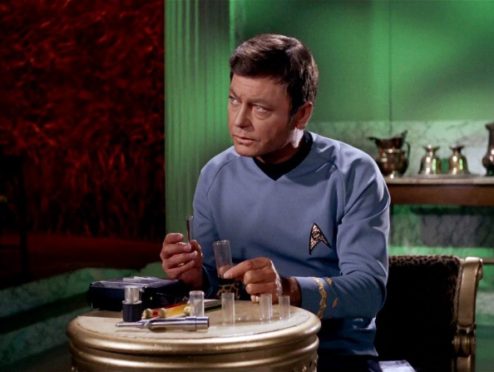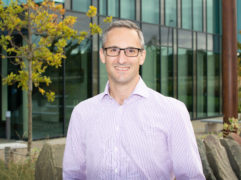Imagine a technology that could monitor your health and deliver lifesaving medicine whenever you needed it, wherever you were and whatever you were doing.
It could automatically call an ambulance if you had a bad fall. Or tell within seconds if you had cancer, just by analysing your breath.
Sounds like science fiction, doesn’t it?
But these are no longer concepts out of Star Trek, delivered by Dr McCoy – they are real healthcare innovations, built by teams of clinicians, scientists and engineers from around the world.
And the next one is going to be built right here in the Highlands and islands.
Now, you might think that sounds unlikely. And that’s fair. After all, we’re a long way from the technology hubs of the world, places like Boston, London or San Francisco.
But it is important to remember that this region has a long, successful history of healthcare innovation spanning more than 100 years. In 1913, the Highlands and Islands Medical Service was launched, the world’s first public health agency and forerunner to today’s NHS. In 1965 we established the Highlands and Islands Development board, a key partner for regional healthcare innovation.
In 1995 Inverness Medical was founded – now LifeScan – one of the largest healthcare companies in Scotland and a global leader in diabetes care. And in 2017 the University of the Highlands and Islands received £9 million from the Inverness and Highland City-Region Deal to deliver on this promise of new healthcare innovations.
So what kind of innovations are we imagining?
Well, it’s fair to say the future of healthcare innovation can be described in one word: digital.
Digital is transforming healthcare the way the internet transformed the way we shop, debit cards the way we use money, mobile phones the way we communicate and aeroplanes the way we travel.
And ‘digital’ doesn’t just mean ‘apps’. It means any digital health technology that can improve our health. Things like software that helps make NHS services more effective, communication platforms that improve doctor and patient interactions, wearable devices that enable continuous health monitoring, artificial intelligence-enabled ‘bots’ that promote beneficial behaviour changes and technologies that allow people to self-manage their long term conditions.
It is also important to remember that innovation doesn’t always mean creating something new – it can also mean using the things we already have in better, smarter and more efficient ways.
This past December, the National Institute for Clinical Excellence (NICE) published a framework that indicates the clinical and economic standards required to approve digital healthcare innovations – to ensure they’re both effective and affordable. Importantly, the framework requires that we address any inequalities that might arise in groups such as elderly, socioeconomically disadvantaged or remote and rural populations. This is great news for the Highlands and islands, since it means our unique geography and infrastructure will not be ignored.
Undoubtedly, this is going to be tough. To succeed we need clinicians, patients, academics, entrepreneurs and companies to help design, test and manufacture these new technologies. We need a durable open innovation model that will enable us to translate ideas into products and services. We need to tackle difficult questions around data ownership, security and sharing to ensure patient confidentiality isn’t compromised. And we need space for teams of people to meet, imagine and build these innovations of tomorrow.
To address these needs, we’re building a new facility on the Inverness campus, co-located with the NHS Highland Elective Care Centre and a Highlands and Islands Enterprise Life Science incubator building. The idea is to bring people together, under the same roof, so they can brainstorm, design and prototype their ideas. The opportunities are significant – not only for healthcare innovation, but for increasing the number of companies moving to the area, creating new employment opportunities and growing our regional economy.
Of course, the most important part of healthcare innovation isn’t about technologies, or buildings, or companies. It’s about people. All of us.
Healthcare innovations will only be effective if they’re useful, useable and used, and the key to that is cooperation. None of us want to create white elephants – and we need the help of P&J readers to say what’s worth doing – so we can stop, proceed or change things when necessary.
So how can you help? Well, by taking part – when we ask for volunteers in a study, or to participate in focus groups, or by agreeing to securely share some of your clinical data. And if you don’t want to do those things, to help us by saying why – so we don’t try and pursue innovations that no one wants.
This spirit of cooperation is one of the great strengths of the Highlands and islands, and a key reason we will succeed. We are a close community and we work together to make things better. Not just for ourselves, but for everyone who lives here. By taking an active role, we can all succeed in building the next generation of healthcare innovations, right here in the Highlands and Islands.
Dr Adam Giangreco is director of innovation and commercialisation for the University of the Highlands and Islands











